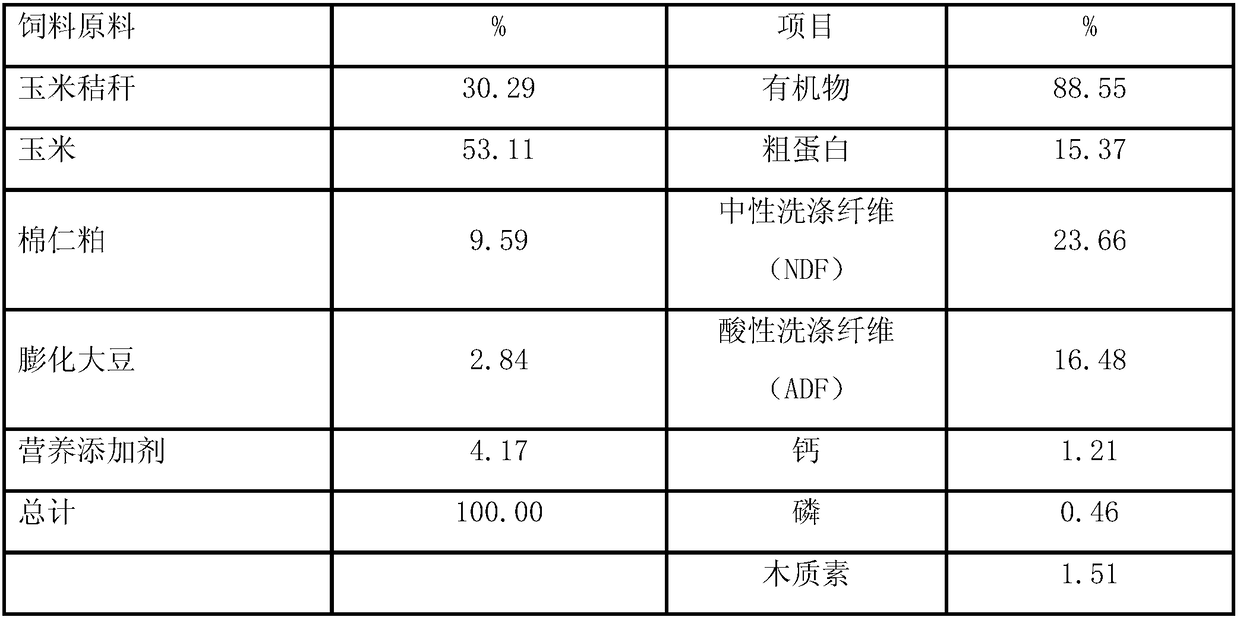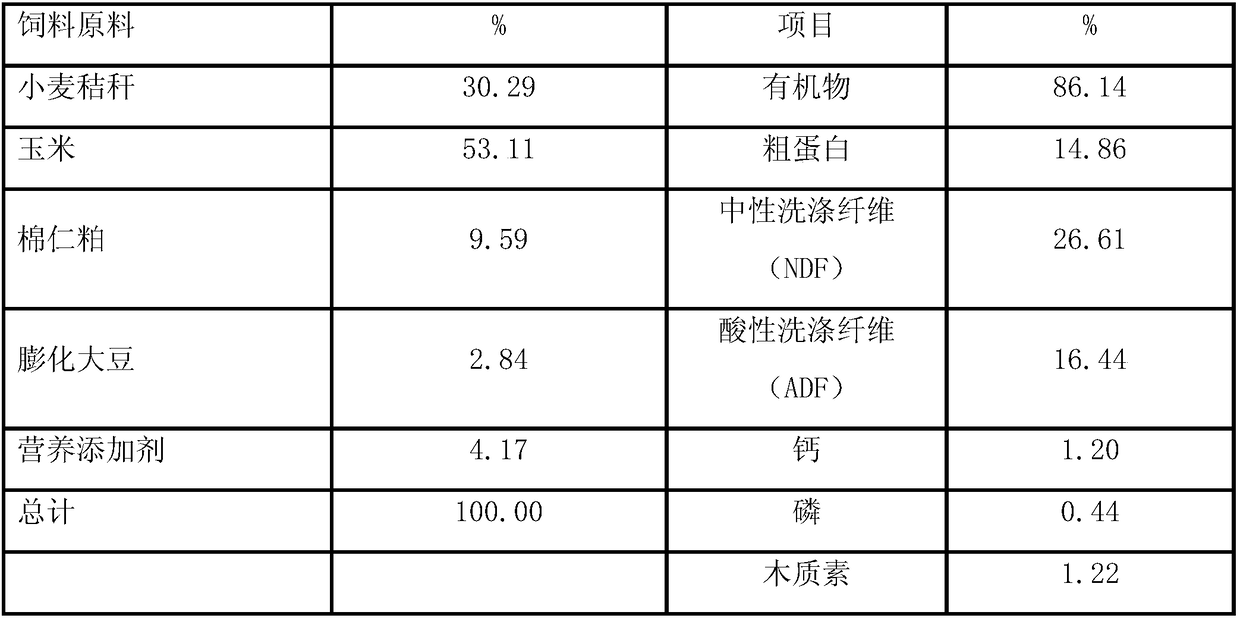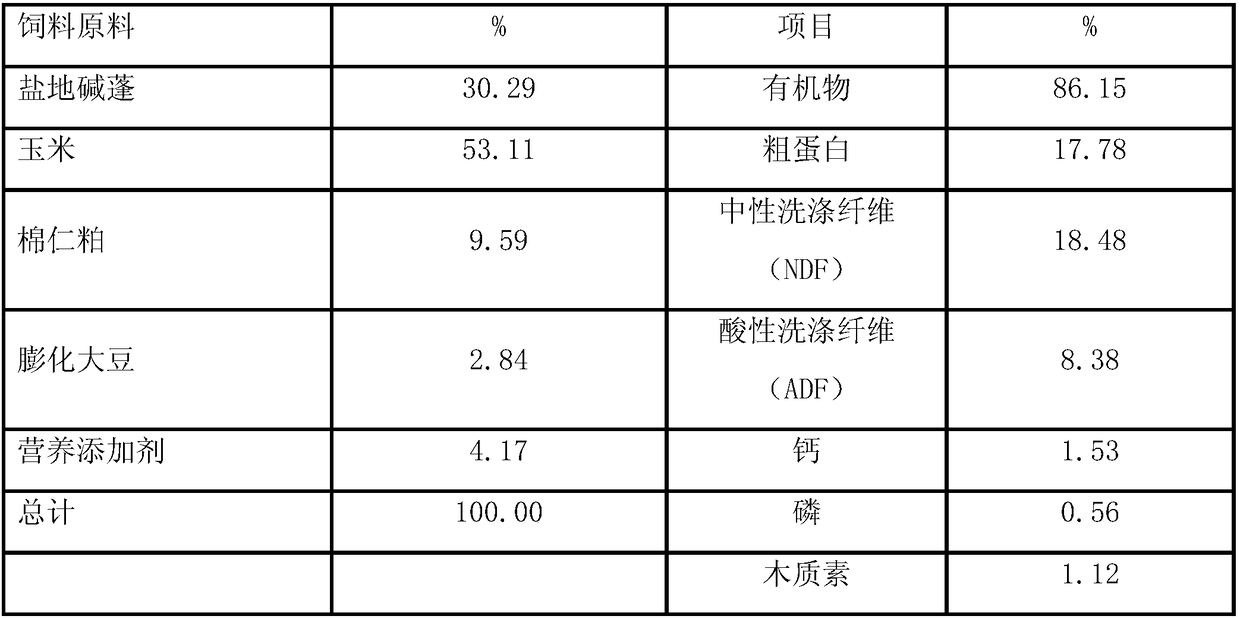Application of suaeda salsa in livestock breeding
A technology of Suaeda salsa and its application method, which is applied in the field of animal husbandry to achieve the effects of wide sources, promoting rapid growth, and reducing breeding costs
- Summary
- Abstract
- Description
- Claims
- Application Information
AI Technical Summary
Problems solved by technology
Method used
Image
Examples
Embodiment 1
[0018] Embodiment 1 Experimental Animals and Experimental Design
[0019] Eighteen 90-day-old Altay rams with an average body weight of 22.90±0.47kg were selected and randomly divided into 3 groups of 6 each. Under the condition of 70% dietary concentrate, the sheep in each group were fed with corn stalks, wheat stalks, and Suaeda salsa, and were slaughtered after being fed to 180 days old under the condition of whole house feeding.
Embodiment 2
[0020] Example 2 Animal Diets and Feeding Management
[0021] Refer to the US NRC (1984) recommendations and the nutritional standards for sheep to design the experimental diet. The composition and nutritional level of the diet for the corn stalk group are shown in Table 1. The dietary composition and nutritional level of the wheat straw group are shown in Table 2. See Table 3 for the dietary composition and nutritional levels of the Suaeda salsa group. The feeding experiment was carried out at the experimental site of Karamay Linhai Park from June 1, 2017 to August 29, 2017. During the experiment, the lambs were fed in a single pen and had free access to food and water. Feed once a day at 09:00 and 18:00, and increase or decrease the feeding amount appropriately each time depending on the situation of the remaining feed, so as to ensure that the ratio of fine grain to coarse grain remains basically unchanged. Nutritional additives were purchased from Urumqi Branch of Xinji...
Embodiment 3
[0029] Example 3 Collection, processing and preservation of feed raw materials
[0030] After preparing the concentrate (prepared according to the weight percentages of corn, cottonseed meal, expanded soybeans, and nutritional additives in the above table), the concentrate, corn stalk, wheat straw, and Suaeda salsa were sampled, and mixed Concentrate sample and 600g, 800g, 800g and 800g of corn straw, wheat straw and Suaeda salsa. All crushed, passed through a 40-mesh sieve, weighed, sealed, and stored in a dry and cool place away from light.
PUM
 Login to View More
Login to View More Abstract
Description
Claims
Application Information
 Login to View More
Login to View More - R&D
- Intellectual Property
- Life Sciences
- Materials
- Tech Scout
- Unparalleled Data Quality
- Higher Quality Content
- 60% Fewer Hallucinations
Browse by: Latest US Patents, China's latest patents, Technical Efficacy Thesaurus, Application Domain, Technology Topic, Popular Technical Reports.
© 2025 PatSnap. All rights reserved.Legal|Privacy policy|Modern Slavery Act Transparency Statement|Sitemap|About US| Contact US: help@patsnap.com



